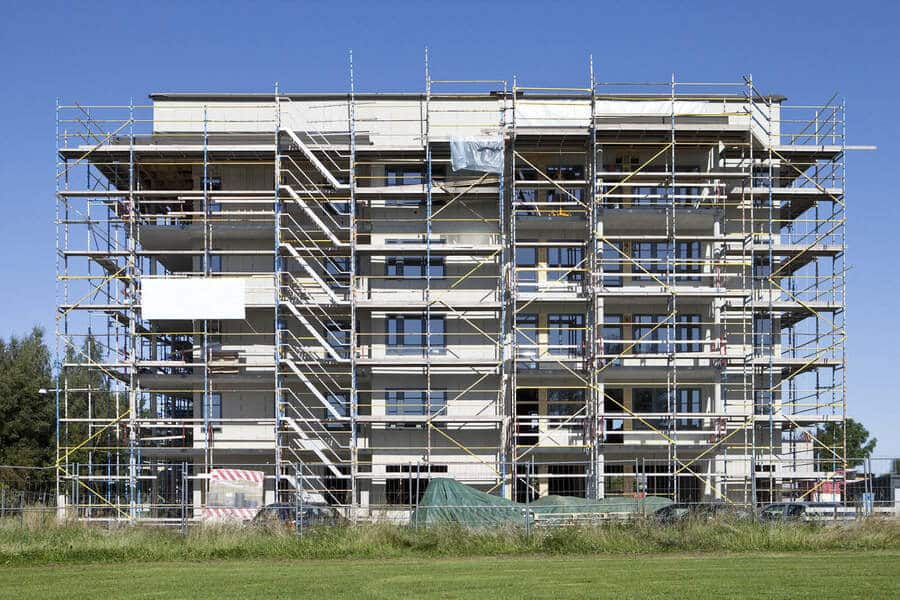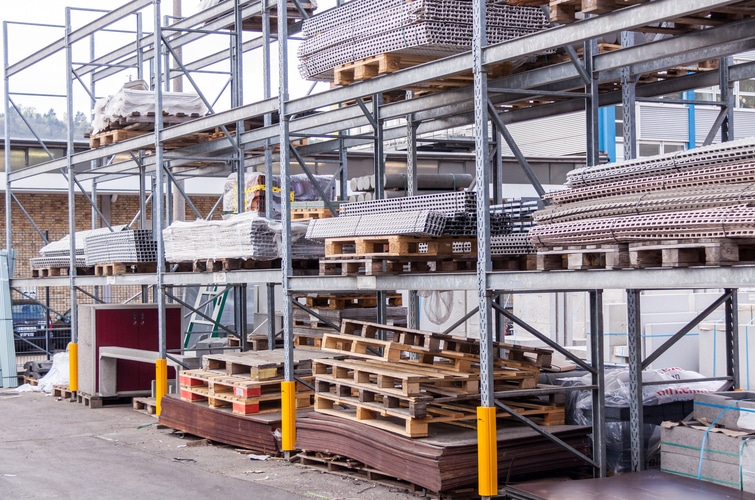500 Hood Road, Suite 320Markham ONL3R 9Z3

A building envelope system is, at the most simple level, the shell of a building to protect the interior and keep out natural elements. The physical elements of a building, like walls, roofs, foundations, windows, and doors, that separate the dry, conditioned indoors from the uncontrolled outside, are the building blocks that establish the envelope.
More precisely, it's an engineering system of structural integrity, moisture, and temperature control, as well as other aspects, working together in an overall design. How well the building envelope, also known as a building enclosure, works overall is based on subsystem envelope solutions, like air conditioning, heating, ventilation systems, and electrical and plumbing systems. The occupants themselves can affect how building enclosures work.
If systems are well designed, compatible, and working well together, the envelope is effective, and the public doesn't even notice it. A good design takes all of these subsystems and factors and impacts into account and addresses them.
The envelope has many functions, needing to be responsive to natural elements like snow and wind, and human concerns like safety and security.
It needs to meet structural needs and support its own weight against internal and external forces. It also needs to address structural movements such as movement caused by expansion and contraction, using expansion joints and careful design.
It needs to control the elements, such as water, air, and temperature between the building's exterior and interior. It keeps water out through moisture barriers, like a secondary waterproofing membrane. An air barrier, or air barriers, block wind and prevent airborne particulates from entering, for better air quality. It insulates against extreme temperatures and provides sound dampening. HVAC systems need to be integrated.
Buildings are expected to be attractive, as well as provide all required functions.
Safety functions, including meeting fire codes and security requirements are critical. It needs to comply with safety-focused Canadian building codes, including the National Fire Code of Canada.
It should be maintainable, durable, and cost-effective, and do everything it's supposed to. It should also be efficient for energy consumption. Finally, there are some more specialized building performance functions, such as earthquake or flood protection designs for natural hazards to which some buildings may be exposed. Occupancy levels, the building's purpose, and whether a building may be exposed to a variety of hazards, like both earthquakes and floods, should be considered and addressed in an integrated way.

The building envelope includes materials that make up its shell, including the foundation, wall assembly, roof assemblies, windows, doors, and openings or gaps.
Reinforced concrete walls, slabs, and footings help foundations meet structural requirements. It also helps control temperature and moisture through insulation and waterproofing. Waterproofing can include applied liquid damp-proofing solutions or waterproof membranes. Good drainage designs are critical.
Roofing is critical to keep sun, rain, snow, and dirt outside. Asphalt Shingles or Metal on sloped roofs are most common and various roofing systems and materials are found on low slope roofs (flat).
Windows should let light in and keep noise and cold or heat out. Energy-saving, window solutions are available for better insulation. Door materials can vary, with some more energy-saving options such as fibreglass available.
Structural walls include exterior cladding, sheathing membrane, exterior sheathing, plus other structural components. It should also include insulation, vapour barrier, and interior sheathing.
Energy efficiency and environmental friendliness are important ethically, and to reduce energy costs. Building envelope systems, materials, and design is critical in achieving high efficiency. The construction industry needs to meet increasing standards. While using better materials, such as Energy Star windows, may increase initial construction costs slightly, the lowered operating and maintenance costs will counteract this.
Buildings lose a great deal of heating or cooling through gaps in the envelope system, such as through inefficient doors and windows, but also through a poorly insulated wall system or roof. Canadian Energy Star rates buildings for their efficiency; to qualify, a careful, efficient design and energy-efficient materials throughout are necessary.
Not only is an efficient envelope good for the environment, but it also reduces costs greatly. While including efficiency features in design and materials at the new construction stage allows for the best savings, even retrofitting can help, resulting in energy savings of 5 to 15%, according to Natural Resources Canada. The National Energy Code of Canada is a building code that establishes requirements for the energy-efficient design and construction of new buildings and additions. The US Building Envelope Design Guide, while not a code or required in Canada, establishes a standard of best practices for building envelopes.
1. What is a building envelope system? A building envelope is the external shell, including walls, roofs, windows, doors, and components, that separates the interior from the external environment.
2. What are the functions of a building envelope? The functions include structural support, moisture and temperature control, aesthetics, safety, and energy efficiency.
3. How does the envelope control elements like water and air? Moisture barriers, air barriers, insulation, and proper HVAC integration control elements like water, air, and temperature.
4. What materials are part of the building envelope? Materials include foundations, roofing systems, fenestration (windows and doors), and wall assemblies.
5. Why is energy efficiency important in the building envelope? Energy-efficient design and materials reduce operational costs, environmental impact, and improve comfort.
6. What are the benefits of an efficient building envelope? Efficiency lowers energy consumption, operational costs, and environmental impact, while enhancing occupant comfort.
7. Are there codes and guidelines for building envelopes? Yes, codes like the National Energy Code of Canada and best practices like the US Building Envelope Design Guide provide guidance for envelope design.
Having your building professionally designed, assessed, and managed will save money, increase energy efficiency, as well as building material lifespans, and improve the environment within.
Accent Building Sciences Inc. (ABSI) is a building sciences engineering firm specializing in all types of Building Envelope projects, including exterior walls, balconies, and guardrails, as well as waterproofing and underground garage repairs. We provide effective building envelope solutions, offering professional investigations, condition assessments, and reports, designs, and specifications.
We provide effective, reliable solutions, and are recognized for our expertise in all aspects of this field, as well as for our comprehensive and professional condition assessments, performance audits, energy-saving reviews, and more. Leaders in construction project management, we're dedicated to keeping your municipal, commercial, multi-residential, or industrial facility protected.

Naji Hassan, a renowned professional in Building Science and Engineering, brings a wealth of knowledge and experience to his field. Educated at Beirut Arab University and Harvard Business School Online, Hassan has honed his expertise in structural and municipal engineering, building science, and business management. As the President of Accent Building Sciences and an experienced Senior Project Manager, he has made significant strides in building envelope engineering, building condition assessments, and energy retrofit programs. His commitment to innovation and excellence is evident in his approach to large-scale project management and his active participation in industry organizations. Hassan is not only a leader in his field but also a prolific writer and thought leader. He regularly shares his insights and experiences through articles on LinkedIn, which can be found at LinkedIn Articles. Additionally, he maintains a blog where he delves deeper into various aspects of building science, accessible at Accent Building Sciences Blog. Outside of his professional pursuits, Hassan enjoys travel, golf, languages, gardening, and music, reflecting his diverse interests and well-rounded character. Naji Hassan's journey in building science and engineering is not just a career but a testament to his lifelong dedication to learning, teaching, and inspiring others in his field.

500 Hood Road, Suite 320Markham ONL3R 9Z3